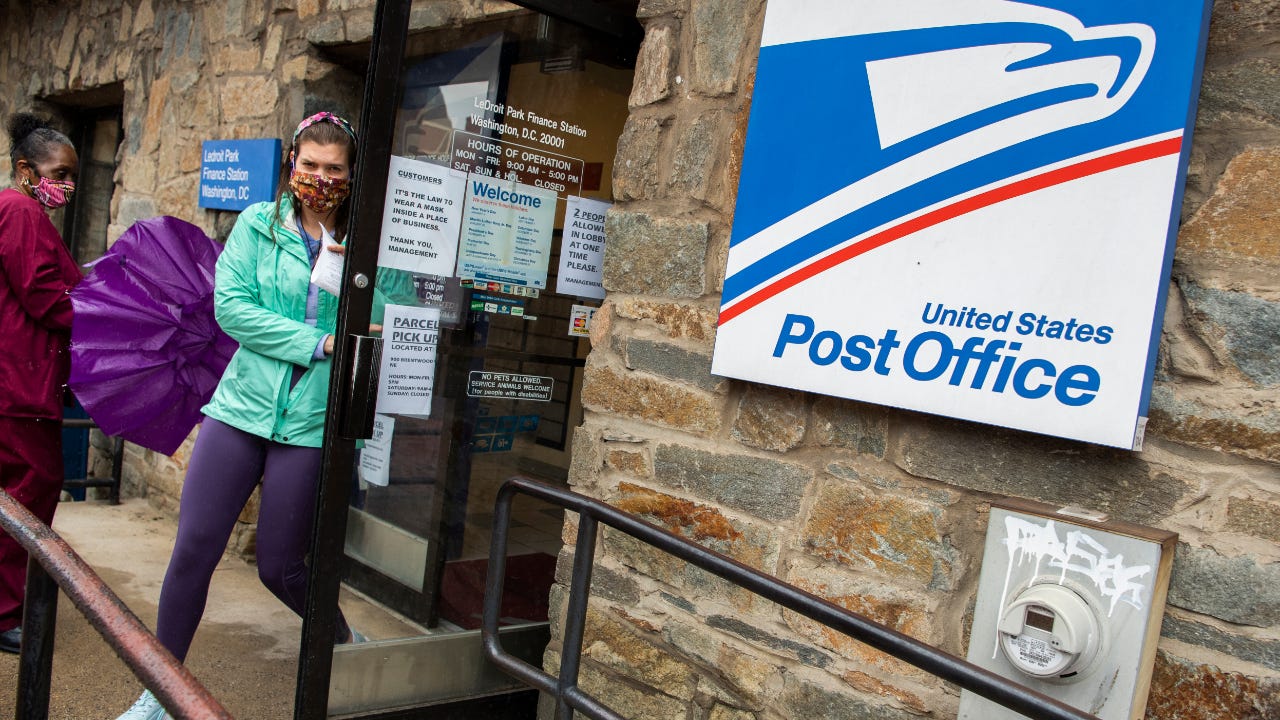Postal banking could help the USPS and underserved communities

The Bankrate promise
At Bankrate we strive to help you make smarter financial decisions. While we adhere to strict , this post may contain references to products from our partners. Here's an explanation for .
There was a time when you could deposit money into a savings account at a United States Postal Service (USPS) location.
Even though the Postal Savings System was discontinued in 1967, there are some who would like to see the system return.
Revenue-generating ideas related to financial services might help the USPS get closer to sustaining its service.
Postal banking could also help reach unbanked and underbanked people in rural and urban communities. On April 15, 2021, Sen. Kirsten Gillibrand (D-NY), Sen. Bernie Sanders (I-VT), Rep. Alexandria Ocasio-Cortez (D-NY), Rep. Bill Pascrell (D-NJ) and Rep. Marcy Kaptur (D-OH) asked Congress to address this through the implementation of postal banking pilot programs.
“Mainstream financial institutions and predatory lenders often take advantage of underbanked Americans with high fees and interest rates that keep them in a cycle of poverty,” said Sen. Gillibrand in an April 15, 2021 statement. “As families across the country try to recover from the economic crisis, establishing postal banking pilot programs would ensure these communities have financially safe and reliable banking services.”
Around 4.5 percent of U.S. households, which equal around 7.1 million households, are unbanked. This is according to the Federal Deposit Insurance Corp. (FDIC) Survey of Household Use of Banking and Financial Services, conducted in June 2021.
Why some have been calling for the return of postal banking
A 2014 white paper from the Office of Inspector General of the USPS and a proposed Postal Banking Act, which was introduced into the Senate in 2018, are examples of talk about the return of postal banking.
That paper predicted that financial services could result in $8.9 billion per year. That number is based on the assumption of 10 percent of the underserved population paying interest and fees to the USPS.
“The ubiquitous nature of brick and mortar post offices would make them ideal for a thoughtful and appropriate expansion of financial services which in turn would help Americans in search of access,” says Mark Hamrick, Bankrate’s senior economic analyst and Washington bureau chief. “It might also provide the Postal Service with a much needed new revenue stream.”
The USPS’ main current banking function is issuing money orders to anyone with a bank account not being a prerequisite. There were 16 million postal money orders processed by the Federal Reserve during the first quarter of 2023 – with the average money order at $305, according to the Fed’s data. So these are still a popular product in this era of digital banking. But USPS money orders have a limit of $1,000. So these can’t be used for every transaction.
Postal banking might help these money order customers with additional cashless transactions.
What is postal banking?
It’s been a little more than 55 years since the Postal Savings System existed.
It was established via a 1910 Act of Congress, according to the USPS website. Its goal was to get people in the U.S. to not hide their money.
According to the USPS, some immigrants banked at post offices in their previous country. The post office paid depositors 2 percent and then redeposited the money into local banks, where it earned 50 basis points (0.5 percent) more. That spread helped fund the Postal Savings System.
People could deposit money in certain increments. Postal Savings System deposits earned 2.5 percent from July 1, 1911 to July 1, 1935. U.S. savings bonds took the place of postal savings bonds in 1935.
In 1966, the USPS stopped accepting deposits and the Postal Savings System ended in 1967.
What would postal banking look like today?
In that 2014 white paper, direct deposits, prepaid cards, bill payments, small loans and international money transfers were some of the potential services mentioned.
These were called non-bank financial services in the report.
In the proposed Postal Banking Act, the bill would have given the USPS the power to provide basic financial services. This included:
- Small loans at a low cost to consumers.
- Small checking and savings accounts that are in specific amounts. These could be with just the USPS, or the USPS could partner with banks and credit unions.
- Transactional and remittance services.
- Other basic financial services in the public interest.
Under that bill, the USPS would not have become an insured depository institution. It also wouldn’t have been a lender.
Postal banking could help reach unbanked Americans
Providing non-bank financial services for the underserved is one of the possible benefits of postal banking.
“The challenge for any venture involving a for-profit commercial venture and the U.S. Postal Service would be balancing the needs of the unbanked against the need for a big bank to drive shareholder returns,” Hamrick says. “There are millions of Americans who haven’t had access to traditional banking services, although some burgeoning business models and technologies may be changing that.”
Bottom line
America relies on the USPS. With the USPS struggling financially in the digital age, postal banking may be worth considering. A solution that both adds a revenue stream to the USPS and helps the unbanked and underbanked could benefit many and give consumers additional banking options.
Related Articles



List of banks offering help to customers impacted by the coronavirus
